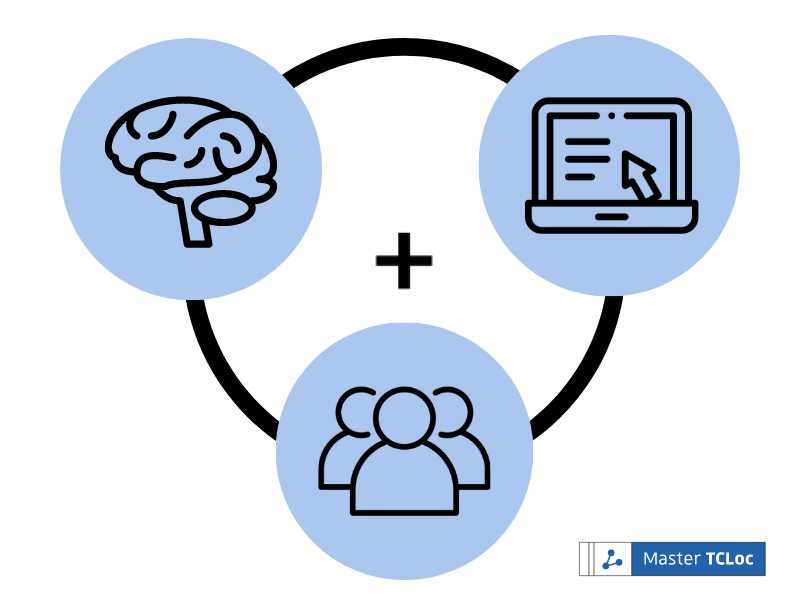Cognitive biases are a great tool for technical communicators as this knowledge can help improve both design usability and user experience. This blog will provide information on how designers can use cognitive biases to better appeal to their audience.
If you are unfamiliar with the concept of cognitive biases, read this interview with Dr. Gustav Verhulsdonck — Cognitive Biases: An Extension of Usability and User Experience.
Using Cognitive Biases in Design
In usability, cognitive biases offer designers a deeper understanding of digital users’ behaviors. Familiarity with cognitive biases can lead to better design practices by equipping creators with the knowledge needed to guide users in accomplishing digital tasks. Different biases can lead to different implementations in design. For instance, the American Psychological Association (APA)’s Dictionary of Psychology defines confirmation bias as “the tendency to seek information that confirms pre-existing thoughts, ideas, or expectations while avoiding contradicting information” (2020). Knowing that the average digital user has a confirmation bias, designers can adjust how information is presented. In relation to this bias, we consulted Dr. Quan Zhou, professor, department chair, and graduate program director at Metropolitan State University, and he suggested that designers could use the confirmation bias to present contradicting information side-by-side. Presenting alternative information in a side-by-side comparison encourages users to make informed decisions.
Many cognitive biases exist, some more researched than others, but the challenge for designers is learning how to use this information. Read on to learn more on how to implement cognitive biases in design.
How to Incorporate Cognitive Biases in Design
Knowing when and how to integrate cognitive biases is essential. Below are two phases with a series of steps that can help guide designers in understanding and using their audience’s biases in design.
Preparation Phase:
Dr. Zhou shares that it is crucial to consider cognitive biases before a design is complete. Since biases offer a perspective or lens through which a designer can view their audience, waiting until after the digital media asset is released is not helpful in addressing user needs and expectations.
The preparation phase is an important stage for conducting research and brainstorming the types of design elements that should appear in your digital design. Conducting research helps you gain a better understanding of your audience and determine if cognitive biases can be addressed in your design. To consider the role of cognitive biases in your design, begin by:
- Researching your target audience
- Researching cognitive biases
- Determining which biases your audience is most likely to rely on
- Note: Some designs may be restricted by formatting standards and unable to address cognitive biases. One example includes legal notices or clauses that must appear in the original documentation format. Designers must determine when to address and when not to address cognitive biases.
- Determine how the relevant biases can be incorporated into a design element
- i.e. If the design is a website selling a product or service, consider allowing customers to share their experience on a feedback or comments section as the social proof bias explains that users are influenced by other people’s actions.
Implementation Phase:
After identifying the cognitive biases that are relevant to your design, you must incorporate them. To ensure that you have implemented effective designs, complete the following steps:
- Create design elements based on the cognitive biases you have identified
- Note: Designers should ensure that designs based on cognitive biases are created in the user’s best interest. Ethical concerns arise when a design practice does not consider the user’s needs and, instead, prioritizes company needs such as an increase in revenue. Since cognitive biases help designers to understand the psychology of users, it is important to integrate this knowledge in a manner that is ethical and benefits the user.
- Finalize your prototype
- Conduct a usability test
- Determine which elements were effective and ineffective
- Revise your design accordingly
Conducting a usability test is crucial to identifying which design elements are helpful and which are confusing for users. Additionally, users can express how well their expectations were met and they can provide suggestions for new design elements. Usability tests provide valuable feedback for revising your design.
Design elements will vary based on the cognitive biases that are being addressed. Furthermore, some digital designs may not demonstrate a need to address cognitive biases, but the user research conducted in the preparation phase will help you learn about your audience and implement designs that guide them.
Additional Resources
Gathering user research can be time consuming and even difficult, but once complete, cognitive biases provide technical communicators with another tool for creating effective designs. In separate interviews with Dr. Verhulsdonck and Dr. Zhou, the professors recommended the following resources for technical communicators seeking information on cognitive biases.
- “Thinking, Fast and Slow” by Daniel Kahneman
- “The Organized Mind: Thinking Straight in the Age of Information” by Daniel J. Levitin
- “Consumer Psychology” by Catherine V. Jansson-Boyd
- “Fogg Behavior Model” by Dr. BJ Fogg
- “Creating Content That Influences People: Considering User Experience and Behavioral Design in Technical Communication” by Nadya Shalamova and Dr. Gustav Verhulsdonck
- “100 Things Every Designer Needs to Know About People” by Susan Weinshenk
Cognitive biases offer technical communicators the opportunity to create more meaningful and intentional design practices. By incorporating human psychology into design, technical communicators can improve the usability of their digital design and improve user experience.
To learn more about cognitive biases and their role in usability, don’t hesitate to read the interview with Dr. Gustav Verhulsdonck!
Acknowledgements
Much appreciation to Dr. Zhou and Dr. Verhulsdonck for their time and insight on cognitive biases. Thank you both for the encouragement and assistance.
About the Interviewer
Madison Brown is an intern in communication for the TCLoc Master at the University of Strasbourg and an undergraduate at Louisiana Tech University. For any questions regarding this article, contact Madison on LinkedIn.



